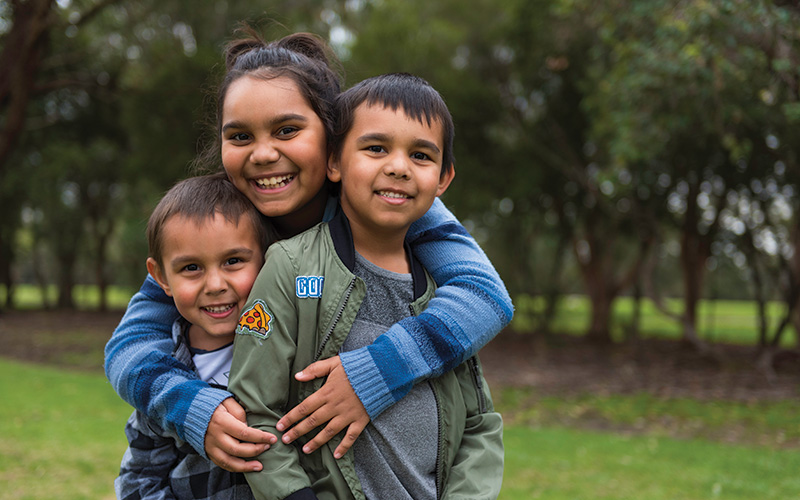Search
The WAACHS regional profiles look at all four volumes of results across the ATSIC regions of Western Australia.
The social and emotional wellbeing of Aboriginal children and young people

The Institute's Standards for the Conduct of Aboriginal Health Research outline our ways of working with Aboriginal communities and peoples.
Research
Development, construct validity and utility of a cross-culturally adapted Otitis Media-6 (OM-6) questionnaire for urban Aboriginal and/or Torres Strait Islander childrenTamara Chris Valerie Veselinovic Brennan-Jones Swift BSc(Hons) MClinAud PhD PhD Clinical Research Fellow Head, Ear and Hearing Health Aboriginal
Research
Notification of acute rheumatic fever and rheumatic heart disease in hospitalised people in the Midwest region of Western Australia, 2012–2022: a retrospective cohort studyAcute rheumatic fever and rheumatic heart disease are caused by untreated group A streptococcus infections. Their prevalence is much higher among First Nations people than other Australians.
Research
Trimodal skin health programme for childhood impetigo control in remote Western Australia (SToP): a cluster randomised, stepped-wedge trialSkin infections affect physical health and, through stigma, social-emotional health. When untreated, they can cause life-threatening conditions. We aimed to assess the effect of a holistic, co-designed, region-wide skin control programme on the prevalence of impetigo.
Research
Vision loss and diabetic retinopathy prevalence and risk among a cohort of Indigenous and non-Indigenous Australians with type 2 diabetes receiving renal haemodialysis treatmentDiabetic nephropathy, vision loss and diabetic retinopathy are frequent comorbidities among individuals with type 2 diabetes (T2D). The Retinopathy in People Currently On Renal Dialysis study sought to examine the epidemiology and risk of vision impairment and among a cohort of Indigenous and non-Indigenous Australians with T2D currently receiving haemodialysis for end-stage renal failure.
Research
The need for community-controlled tools to monitor health impacts of housing and living conditions in AustraliaWe explore the contemporary landscape of housing investments and initiatives seeking to improve health outcomes among Aboriginal and Torres Strait Islander people in Australia, as well as the dearth of quality evidence and agreed approaches to evaluation.
Research
An exploratory qualitative study of inter-agency health and social service partnerships focused on Aboriginal and Torres Strait Islander clientsThe siloed nature of the health and social service system threatens access for clients engaging numerous organisations. Many Aboriginal and Torres Strait Islander people face adverse circumstances which contribute to multiple health and social needs. Effective relationships between health and social services are integral to coordinated service provision to meet the diverse needs of Aboriginal and Torres Strait Islander clients.
Research
Prevalence and burden of coronary artery disease on computed tomography coronary angiography and its correlation with high-density lipoprotein in the Northern Territory, AustraliaIndigenous Australians are known to have a higher prevalence of coronary artery disease (CAD) than non-Indigenous counterparts. Atherogenic lipid profiles, characterised by low serum levels of high-density lipoprotein (HDL) and higher serum triglycerides, have been shown to be more prevalent in Indigenous Australians. The use of computed tomography coronary angiography (CTCA) for risk stratification and diagnosis of CAD has been validated in moderate risk populations, but limited data exists in specific high-risk populations such as Indigenous Australians.
